-
 +29 +6
+29 +6When a Mars Simulation Goes Wrong
The drive to the little white dome on the northern slope of Mauna Loa is a bumpy one. Mauna Loa, the “Long Mountain,” is a colossal volcano that covers half of the island of Hawaii. The rocky terrain, rusty brown and deep red, crunches beneath car tires and jostles passengers. Up there, more than 8,000 feet above sea level and many miles away from the sounds of civilization, it doesn’t feel like Earth. It feels like another planet. Like Mars.
-
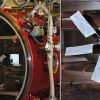 +17 +6
+17 +6Wind-Powered Mars Landers Could Really Work
Small robotic landers near the Martian poles could conceivably harness wind power, a new study suggests.
-
 +18 +3
+18 +3Mars' 2018 dust storm intensifies
The martian dust storm that put the Opportunity rover to sleep in early June has by now intensified into a Planet-Encircling Dust Event, or PEDE, that would cover both North America and Russia completely if it were on Earth. Though its current location is nowhere near Opportunity’s, the Curiosity rover (currently studying Gale Crater) captured the growing impacts of the storm in a selfie snapped June 15.
-
 +17 +1
+17 +1Mars is said to have had the right conditions to host life around 3.8 billion years ago.
By analysing rocks from the Gale crater — a 96 mile wide depression that was previously a huge lake — researchers have demonstrated the conditions on Mars over different periods. Their examination, distributed in the Journal Science, uncovers how the atmosphere transformed from a cool one to a warm, mild one in which life may have flourished.
-
 +2 +1
+2 +1Mars has become brighter than Jupiter
Don’t miss March! Its brilliance has just surpassed that of Jupiter and, after Venus sets at the beginning of the night, Mars becomes the brightest point star in the night sky. The planet is clearly visible to the naked eye in the second part of the night and at dawn in the south of the sky even in the middle of the city, even in an environment degraded by light pollution. This summer, Mars is almost twice as bright as in its previous opposition in 2016.
-
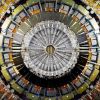 +16 +2
+16 +2NASA’s New Vasimr Plasma Engine Could Reach Mars In Less Than 6 Weeks
NASA recently delivered $10 million in funding to Ad Astra Rocket Company of Texas for further development of its Variable Specific Impulse Magnetoplasma Rocket (VASIMR), an electromagnetic thruster proficient of propelling a spaceship to Mars in just 39 days. NASA’s funding was part of the “12 Next Space Technologies for Exploration Partnership.”
-
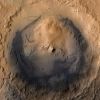 +11 +3
+11 +3Is Mars Not So Earthlike After All?
In August 2012, the Mars Science Laboratory’s rover Curiosity landed at the base of Gale crater, a 5-kilometer-high mountain that formed when a meteor hit Mars billions of years ago. Using its 2-meter-long arm to drill into the planet’s surface, Curiosity scooped up and analyzed rock and soil samples, including some light-colored, crystal-studded rocks surprisingly similar to the ancient granitic rock that forms much of Earth’s continental crust.
-
 +46 +10
+46 +10Liquid water 'lake' revealed on Mars
Researchers believe they have found the first existing body of liquid water on the Red Planet.
-
 +24 +4
+24 +4How Mars’s Close Encounters Helped Us Map the Red Planet
National Geographic’s archive has maps of Mars dating back to when some scientists still thought there might be Martian-made canals on its surface. By Betsy Mason.
-
 +2 +1
+2 +1We won't be able to go and live on Mars, scientists warn
We will 'need technologies well beyond our current grasp' if we plan to move to the red planet, a new study has found
-
 +3 +1
+3 +1NASA contest finalists show off their Mars habitat models
Yes, we've yet to successfully send humans to Mars, but we already need to start thinking how we can stay there for long stretches of time -- or even for good. NASA launched the 3D-Printed Habitat Challenge back in 2015 to find a suitable artificial housing for the first wave of Martian residents, and now the agency has narrowed the contestants down to five after seeing the realistic virtual models they created. The agency and its project partner, Illinois' Bradley University, judged 18 teams' models created using a specialized software.
-
 +19 +4
+19 +4Mars will be the closest to earth it's been in 15 years tonight
If you missed the glorious display from a blood red moon and radiant Mars during the weekend's early morning eclipse, there's another opportunity to get a good glimpse of the red planet tonight – Mars will be the closest to Earth it's been in the last 15 years. Unlike the eclipse, (which was more lengthy than usual but still a tough one to catch if you're usually in bed at 5.30am on a Saturday), this planetary performance can be enjoyed over the course of several hours tonight – and in the next few nights too.
-
 +17 +3
+17 +3Layers of the South Pole of Mars
What lies beneath the layered south pole of Mars? A recent measurement with ground-penetrating radar from ESA's Mars Express satellite has detected a bright reflection layer consistent with an underground lake of salty water. The reflection comes from about 1.5-km down but covers an area 200-km across. Liquid water evaporates quickly from the surface of Mars, but a briny confined lake, such as implied by the radar reflection, could last much longer and be a candidate to host life such as microbes. Pictured, an infrared, green, and blue image of the south pole of Mars taken by Mars Express in 2012 shows a complex mixture of layers of dirt...
-
 +2 +1
+2 +1No seriously, Elon. We can't just nuke Mars
On Monday, a study published in Nature Astronomy took an exhaustive look at what it would take to terraform the Red Planet and fulfill generations of sci-fi dreams. In it, leading Mars experts tallied the planet’s stores of carbon dioxide, a powerful greenhouse gas, and gauged the likelihood of releasing all that CO2 to create a stable atmosphere — one thick enough to have liquid water on the surface.
-
 +23 +6
+23 +6Red Planet, Red Moon, and Mars
Mars is also known as The Red Planet, often seen with a reddish tinge in dark night skies. Mars shines brightly at the upper left of this gorgeous morning twilight view from Mornington Peninsula, Victoria, Australia, but the Moon and planet Earth look redder still. Taken on July 27, the totally eclipsed Moon is setting. It looks reddened because the Earth's umbral shadow isn't completely dark. Instead Earth's shadow is suffused with a faint red light from all the planet's sunsets and sunrises seen from the perspective of an eclipsed Moon.
-
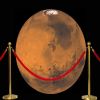 +3 +2
+3 +2The Genetics, and Ethics, of Making Humans Fit for Mars
We could make people less stinky, more resistant to radiation, even less dependent on food and oxygen. But would the new creature be human? By Jason Pontin.
-
 +18 +5
+18 +5NASA on Sleeping Mars Opportunity Rover: "We Still Haven't Heard From It"
Mars is kind of a bummer: That place is a hotbed of dynamic dust storms that got so big in recent months that they encircled the entire planet. Those conditions, sure to be a challenge for future Mars colonies, are a buzzkill for NASA’s Opportunity Rover right now: A dust storm forced the droid, which has been roaming Mars for 14 years, to shut down in June, and it’s still turned off today.
-
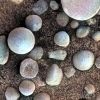 +17 +2
+17 +2NASA identifies 'foreign object debris' spotted by Mars rover
NASA solves a Mars mystery after analyzing a strange flake-like object.
-
 +11 +1
+11 +1Six Things About Opportunity's Recovery Efforts
The global dust storm on Mars could soon let in enough sunlight for the Opportunity rover to recharge.
-
 +11 +2
+11 +2Mars' skies are clearing up, but the Opportunity rover is still fast asleep
For the past three months, Mars has been in the midst of a global dust storm, depriving the red planet almost entirely of sunlight. That's been particularly challenging for the heavenly body's resident robot, the solar-powered Opportunity rover, and his commanding engineers back here on Earth. But this week, the skies have become much clearer, with the Sun's light finally reaching the planet's surface. Unfortunately, it seems the skies are still not bright enough for the rover to wake.
Submit a link
Start a discussion




















